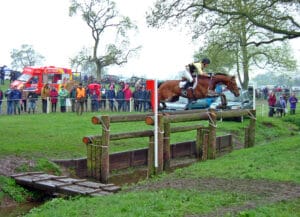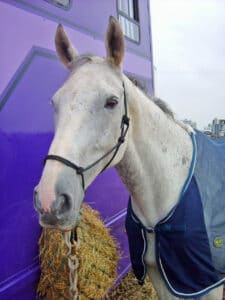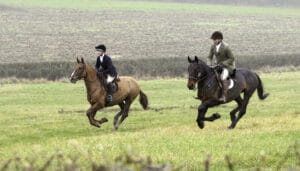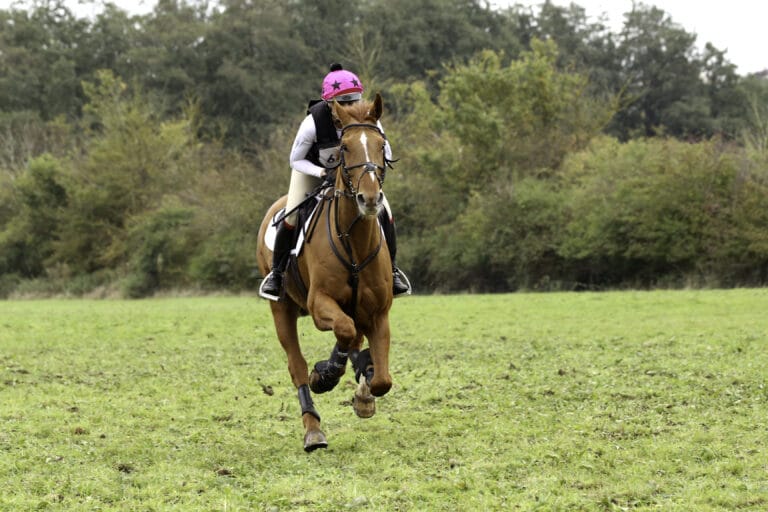With a degree in Equine Sports Coaching, ALISON LINCOLN has taught extensively in colleges across the UK and has a special interest in eventer fitness.
Eventing is the ultimate test of equine endurance and stamina. Adequately preparing your horse to perform at their very best in this demanding sport is a skill set unto itself. UK-based equine sports coach, author and eventer Alison Lincoln has immersed herself in this area to unlock the secrets and help other riders make the breakthroughs they are looking for.
What constitutes fit?
When dealing with the concept of fitness, it pays to have a benchmark. What does being fit actually mean? Alison explains that although it may sound like a simple question, fitness is actually both a science and an art: “If we’re talking about fitness for eventing, we’re not really talking about schooling or jumping, we’re talking about sufficient fitness to be able to cope with the demands on competition day.”
And those demands are far greater than you might think, which is one of the key reasons a rider may find their horse goes fantastically at home, but never performs quite as well at an event. “I have people say ‘I can gallop my horse at home for six or seven minutes and he’s fine, but when we get galloping during cross country at the event, he dies on me. What can I feed him to pep him up?’ But really they need to look at fitness,” Alison explains. “You’re not just getting the horse fit for the cross country, you’re getting them fit for the whole day.”

An eventer must be fit enough to cope with the demands on competition day. A tired horse is more likely to make mistakes or get injured
Research suggests that most eventers simply aren’t working their horses at the right intensity at home to adequately prepare for competition. Firstly, you have to consider travel to the event, and research shows that because of the way they balance and stabilise themselves, for the horse one hour of travel equates to an hour of walking. So your horse has already done quite a bit of exercise before they even step off the float. “I know of a top-level eventer who worked out how many hours of travel it would take to arrive at the venue, then factored in that amount of time as a rest and recovery period for the horses before the competition even started,” Alison says.
As well as the dressage test, show jumping and cross country rounds, you might also ride a twenty minute warm up for each. On top of that, the terrain on course will impact your horse. Alison points out that all in all, this is a lot more than a rider usually works their horse at home. So, in a nutshell being truly fit means your horse is able to cope with all these demands, without running out of steam before arriving at the finish line.
Getting fit
Alison is quick to state that because many factors are at play, there is no one-size-fits-all approach for getting an eventer fit. A previously trained horse that has had a short break may only need six weeks to get fit, while an older horse that had been fit but has had a long layoff will need at least eight to ten weeks. A young horse who’s never been fit could take six to twelve months, and a horse returning from injury will likely need a tailored programme over a longer period of time.
Bearing these different starting points in mind, Alison offers a general plan for bringing a horse into fitness. In weeks one and two, she suggests starting with three to four evenly spaced walk sessions per week, each lasting up to an hour. “Walking is an absolutely brilliant way of getting your horse fit for a number of reasons,” she says. Walking is the least energy efficient pace which is why it is so good for building fitness. There’s no speed or momentum to help carry the horse along as in trot or canter. Instead, the horse has to lift and place each leg individually. Plus walking has a really low risk of injury.

An hour travelling is the equivalent of an hour’s walk in terms of energy expenditure, so allow time for rest and recovery.
For the next two weeks, aim for one hour of walk, with short periods of trot (five to ten minutes), for three to four sessions per week. At around the sixth week, start to add in slow canter work and reduce the weekly mileage at trot. An interesting point to note is that after six to eight weeks of fitness training, trotting has very little impact – the horse’s fitness will reach a certain point and plateau. “At this stage, you actually get no further benefit from working in trot, no matter how long you go for. Instead, you’re just increasing your horse’s risk of injury,” Alison explains. However, trot still remains an important factor for warm up.
By weeks eight to ten, you should focus on maximising muscle and heart training. Work your horse at a heart rate of 160 to 180 beats per minute (a fast canter) one to three times per week, depending on the level of competition you are training towards. Most horses can be competition fit within twelve weeks – assuming there are no setbacks along the way.
Are we there yet?
It’s difficult to assess how hard your horse has been working without the use of a heart rate monitor. If you can access one, the benefits in helping work out your horse’s level of fitness are worth it.
Alison outlines some fitness measurements you can employ: Aim to work your horse over a set distance at a set speed, and as they get fitter they will perform the same exercise at a lower heart rate. Or, you can work the horse at a constant heart rate (irrespective of speed) over a set distance. An increase in fitness will mean the horse will cover the distance in a shorter time.
Measuring your horse’s recovery rate is a sure-fire way to check for developments in fitness. First record your horse’s resting heart rate so you have a baseline. Then measure the decline in heart rate immediately after exercise and again at five, ten and fifteen minute intervals. The fitter the horse, the more quickly the heart rate returns to pre-exercise levels.

Recovery rate is a good measure of fitness. Assess your horse’s heart rate at 5, 10 and 15 minute intervals after a workout.
Rest up
Often overlooked but very important are rest days. Exercising brings about microscopic tears in the muscles, which is what causes them to be tired or sore after a workout. “It’s the rest period that allows the body to recover and that’s specifically where you get the increases in fitness,” Alison says. Which is why for optimal results, she recommends fitness workouts every other day, totalling three to four sessions per week.
She explains that dressage and show jumping training are not part of fitness training, so a fitness rest day could still be a day when you do a bit of schooling on the flat. However, Alison cautions against too much jumping on the day after a fitness training day: “It’s a bit like doing a weights day at the gym; you wouldn’t do that directly after a high intensity workout.” This is where planning out your horse’s schedule for the week comes in rather handy!
Alison’s parting thoughts are to take your time and listen to your horse. If you prepare your horse properly from the outset, you are more likely to have a longer-lasting and more fruitful partnership together.
Go to Equestrian Hub for more great content from Alison, including why fitness is more important than ‘peppy’ feed. And for a wealth of information you really can’t do without, treat yourself to her great book Be Your Own Equine Sports Coach.



